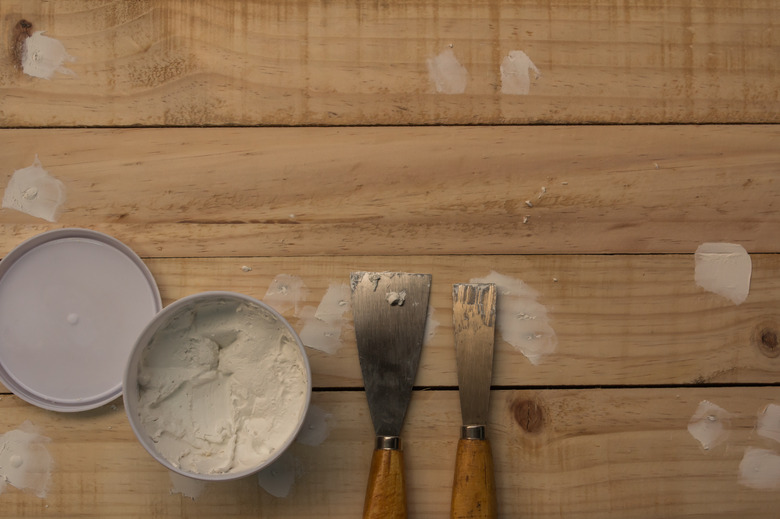What Is The Difference Between Wood Putty And Wood Filler?
As far as manufacturers are concerned, there isn't much difference between wood putty and wood filler. You'll see one product labeled "wood filler" and another with virtually the same ingredients labeled "wood putty."
To a woodworker, however, there's a big difference between wood filler and wood putty. If you had to reduce the difference to one characteristic, it would be that wood filler is sandable and is intended for unfinished wood, while wood putty is not sandable and is best used on finished wood.
Wood Putty Is Oil Based and Remains Flexible
Wood Putty Is Oil Based and Remains Flexible
Most wood putty products are similar to plumber's putty or window glazing. They are oil based, so they resist moisture, and they may harden, but they never completely lose their flexibility. These qualities make putty most suitable for exterior applications because it won't wash out, and it won't crack with expanding and contracting wood.
Putty generally comes in small containers because its main use is for patching small holes on finished wood, and a little goes a long way. You can't stain putty, but it comes in a variety of wood tones, and you can usually find one that is a reasonably good match.
Because putty is oil based, you technically shouldn't paint over it with a water-based product. If you use a small amount of putty and give it several days to dry, however, there shouldn't be a problem.
Wood Filler May Be Water Based, and You Can Sand It
Wood Filler May Be Water Based, and You Can Sand It
Perhaps the best-known wood filler is Plastic Wood, manufactured by DAP. It's a solvent-based product, but many similar fillers are water based. Common ingredients in wood filler include cellulose, as you would expect, along with limestone and attapulgite, which are two of the main ingredients in drywall joint compound. DAP also makes a water-based product, Plastic Wood Latex Wood Filler, which contain limestone but no cellulose.
Two-part epoxy-based wood fillers blur the line between wood putty and wood filler. Epoxy wood filler is a pure plastic that can be used on finished or unfinished wood. It contains no cellulose, but because it cures hard enough to sand, it's closer to a filler than a putty.
Neither of these products should be confused with wood-grain filler, which is used primarily by finishers. It's very thin, and you spread it on a tabletop or countertop and sand it flat prior to applying the first coat of finish. It creates a level substrate for the finish, and the result is a glassy-smooth surface.
Should I Use Wood Filler or Wood Putty?
Should I Use Wood Filler or Wood Putty?
Anytime you need to patch small imperfections in a finished surface, you should use wood putty. Lacquer-based patching pencils, which are intended for minor repairs to furniture finish, are actually putty sticks. Because it resists the element better than wood filler, putty is the go-to product for exterior repairs.
Because it's sandable, wood filler is the only thing you should use for patching interior unfinished wood. If you plan to stain the wood, choose a wood filler that contains cellulose because it stains better than limestone. No matter which filler you use, especially epoxy filler, it won't stain the same color as the surrounding wood, so most woodworkers use prestained filler for furniture, floors and other woodwork.
Unlike wood putty, wood filler contains no adhesives, so it won't bond to the wood unless you seal it with paint or clear finish. This means that you should use putty to make repairs on finished surfaces, even indoors. Remember, you don't always have to leave putty unfinished. If the repair is fairly small, and you give the putty time to dry, you can coat it with lacquer, varnish or even water-based polyurethane.
